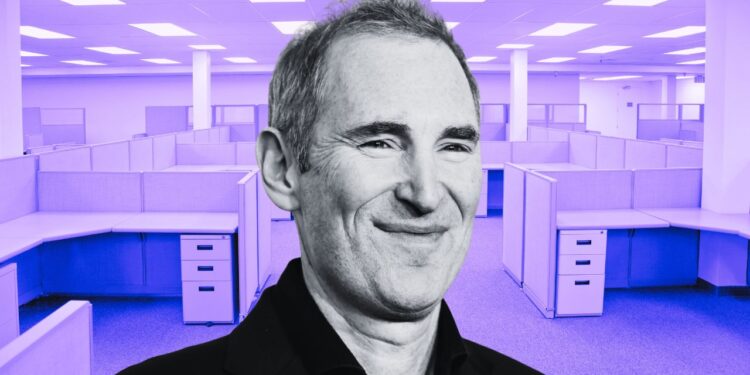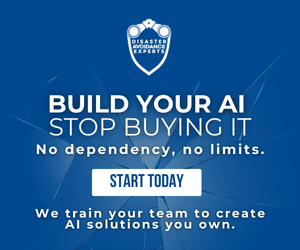- Leaders struggle to balance traditional office control with the shift to remote and hybrid work.
- CEOs need to present RTO as a temporary phase while building a flexible future.
- The future of work demands flexibility, autonomy, and trust for a thriving workplace.
Amazon CEO Andy Jassy is correct — just not in the way he thinks.
The debate over return to office (RTO) is less about whether in-person work has value and more about how leaders are struggling to navigate a workforce that no longer plays by the old rules.
Jassy, like many executives, is caught between immediate business pressures and the reality that work itself is evolving in ways that demand new leadership approaches.
Why Leaders Cling to the Office
For executives, the office has always been more than just a place to work. It’s a symbol of control, authority, and cohesion. The ability to walk the halls, engage in impromptu discussions, and oversee operations in real time reassures leaders that things are running smoothly.
The office environment has historically provided structure and visibility, allowing them to reinforce company culture, make strategic decisions with confidence, and maintain a direct line of sight on performance.
Then, the pandemic forced an abrupt shift to remote work, a change most leaders didn’t choose. Overnight, the mechanisms that had long helped executives lead and manage teams disappeared.
Many adapted, but the reality is they are still searching for ways to replicate the sense of order and oversight that the office once provided.
The challenge isn’t that leaders don’t see the future coming — it’s that they don’t yet trust a fully decentralized, flexible workforce model to drive consistent, large-scale success.
With employees increasingly expecting autonomy and rejecting rigid structures, leaders like Jassy are stuck in a dilemma: balancing immediate operational needs with the long-term transformation of work.
Leaders Know the Future—But Don’t Know How to Get There
Executives aren’t unaware of workplace trends. They understand that organizations will look vastly different in five years, with globally distributed teams, project-based collaboration, and a workforce that values autonomy over traditional career paths.
They recognize that engagement and productivity will be driven more by purpose and trust than by physical presence in an office.
But here’s the problem: there’s no established playbook for making this transition at scale. Many leaders don’t resist flexible work because they doubt its potential—they resist it because they don’t yet have reliable systems to ensure accountability, innovation, and culture in a hybrid or remote-first world.
Without a clear roadmap, they default to what they know: in-person collaboration, traditional hierarchies, and centralized decision-making.
How CEOs Should Rethink RTO Messaging
The real issue isn’t whether companies are asking employees to return — it’s how they’re framing it.
Instead of presenting RTO as a necessary reset, executives should acknowledge it as a transitional phase while they build the infrastructure for a more flexible future.
Imagine if Jassy addressed his employees with a message like this:
“We recognize that the workplace is evolving, and we see a future where flexibility and autonomy define how we work. However, we are still in a learning phase, figuring out how to maintain innovation, collaboration, and alignment at scale. The office has historically played a crucial role in these areas, and we need to strike the right balance between structure and flexibility.
Our RTO policy isn’t a step backward — it’s a bridge. It allows us to stabilize as we explore new ways of working that support both business goals and individual needs. We want your input, ideas, and feedback as we navigate this shift together. The end goal isn’t just about where we work — it’s about how we create an environment where everyone can thrive.”
Framing RTO as a short-term solution to a long-term transformation would change the entire conversation. Instead of employees viewing it as a rigid demand, they might see it as part of an ongoing effort to create a workplace that truly works for everyone.
Leadership in the Era of the New Social Contract
Ultimately, this is about trust.
Employees today expect a different relationship with work — one that isn’t based on obedience but on mutual benefit. They work best when they feel their time, autonomy, and well-being are respected.
Companies that acknowledge this shift and engage employees in shaping the future will emerge stronger.
The most effective leaders won’t be the ones who force a return to the past but those who guide their organizations through this transition with honesty, adaptability, and a willingness to experiment.
They will recognize that the best employees don’t work because they’re forced to, but because they want to — because working toward a shared vision gives them purpose.
Amazon and other companies facing this crossroads have a choice: impose outdated models or embrace the challenge of designing a future that works for both employees and businesses. The organizations that succeed will be those that choose the latter.


 Dr. Gleb Tsipursky – The Office Whisperer
Dr. Gleb Tsipursky – The Office Whisperer Nirit Cohen – WorkFutures
Nirit Cohen – WorkFutures Angela Howard – Culture Expert
Angela Howard – Culture Expert Drew Jones – Design & Innovation
Drew Jones – Design & Innovation Jonathan Price – CRE & Flex Expert
Jonathan Price – CRE & Flex Expert














